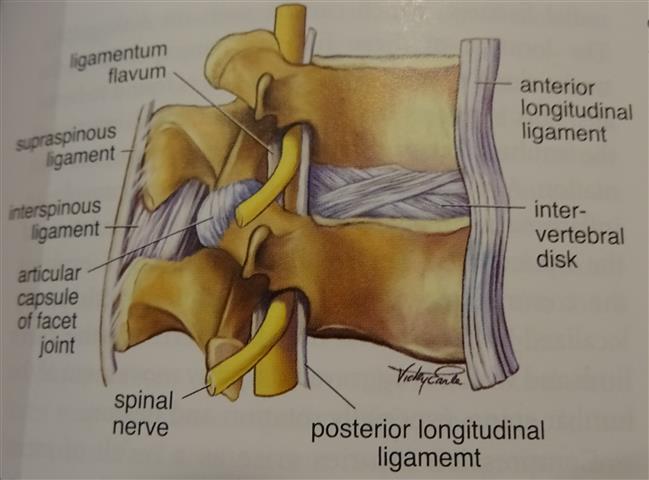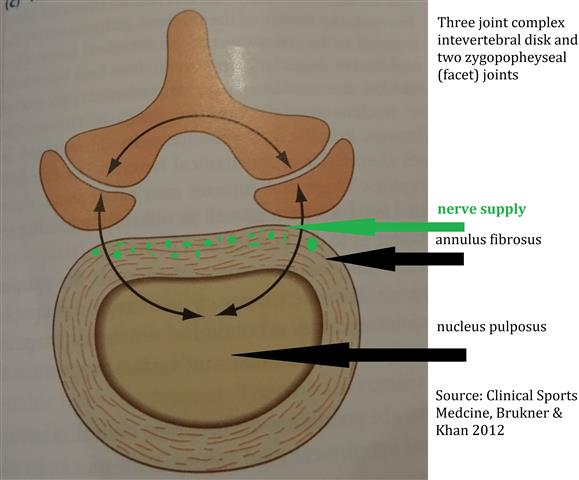A very common source of back pain has been linked to the cartilaginous disks in the spine. These are soft tissue structures between the vertebrae that provide shock absorption and mobility to the spine. They also form the “weak spot” under load or activity. This being the case, they are usually one of the first structural places in the spine to suffer injury. Previously it was believed the disks had no nerve supply or sensory innervation. The only time you would become aware of a problem was when the disks would become damaged in such a way that the spinal nerves or cord would become encroached or “pinched”. The previously-diagnosed injuries were disk herniation/rupture and disk degeneration (height loss). However, it is now recognised that the discs themselves have a nerve supply. This is the outer one-half to one-third of the posterior annulus fibrosis, or that part of the disk closest to the back and the outer fibrous ring of the disk.
Clinically this means the disks are an important consideration in the treatment of pain and mobility issues of the back. Not just for the impact they can have on spinal nerves but the trauma they can be subject to themselves. There are two specific entities that cause disk pain: torsional injury and compression. One of the worst things you can do is to lift something that is too heavy while twisting over (straight leg) and not bending the knees. Just about everyone has experienced this…a classic way to “put your back out”. Correct lifting technique.
Correct posture, correct exercise and correct lifting/working technique all have a major impact on our spine health. Look after it. You only get one.
Source: Clinical Sports Medicine, Brukner & Khan 2012, p.465


